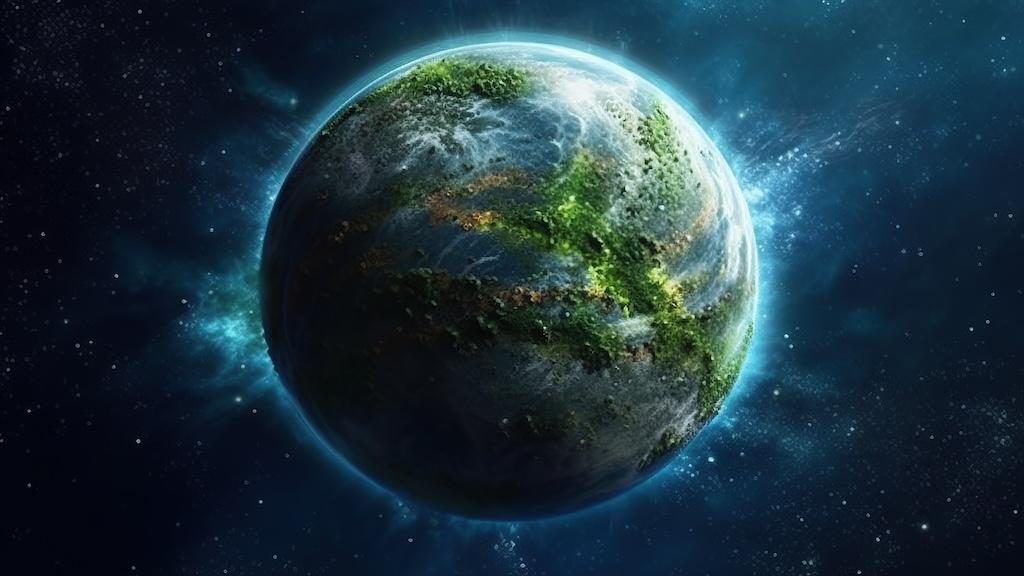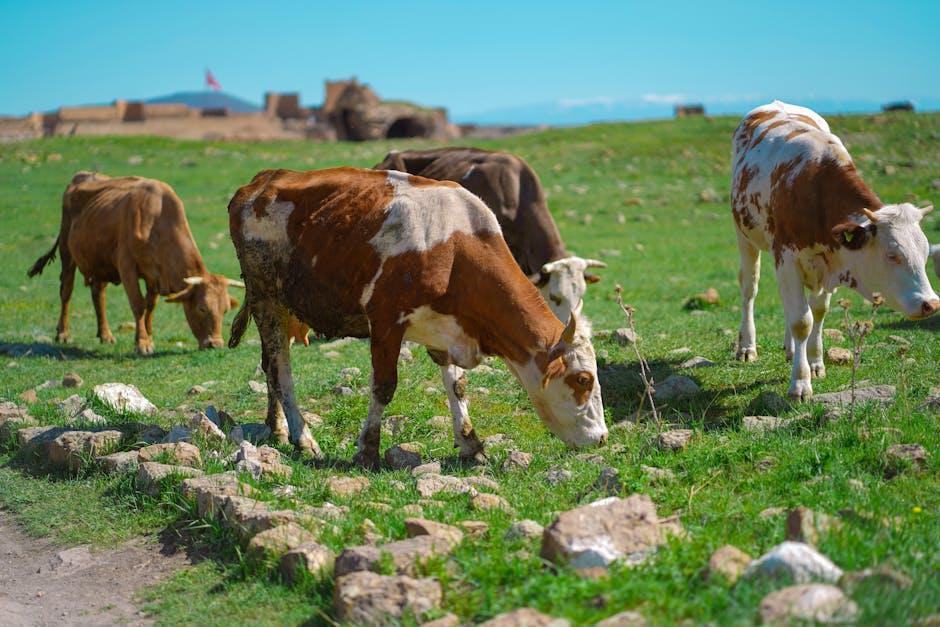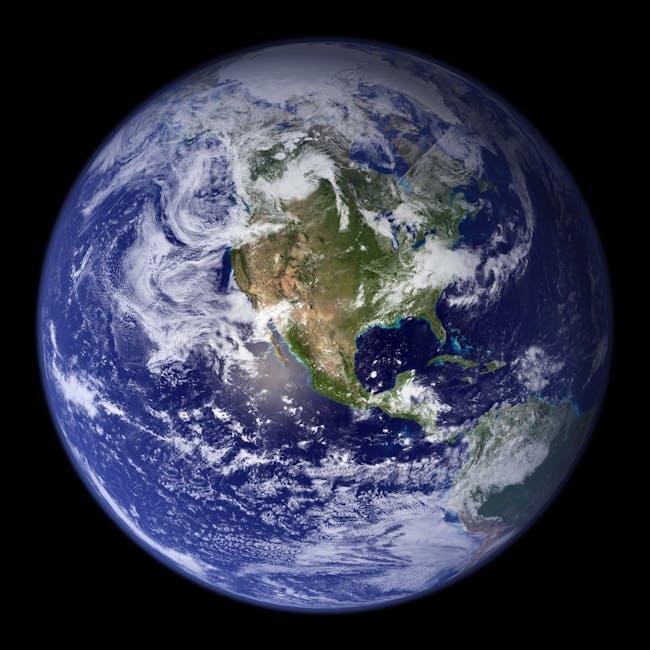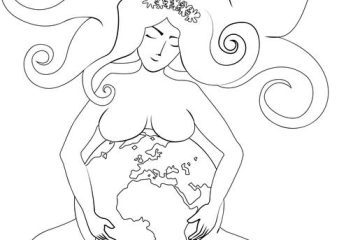Table of Contents
- Understanding Gaia: Unveiling the Essence of Earth’s Living System
- Delving into the Gaia Hypothesis: Science Meets Philosophy
- Gaia’s Role in Climate Change and Environmental Balance
- Empowering Change: How Gaia Inspires Sustainable Living
- Exploring Gaia Theory’s Influence on Modern Ecological Practices
- Q&A
- Insights and Conclusions

Understanding Gaia: Unveiling the Essence of Earth’s Living System
The concept of Gaia serves as a profound metaphor that captures the intricate dynamics of Earth’s ecosystems. Originating from the ancient Greek deity symbolizing Earth, Gaia represents the planet not just as a mere rock in space but a self-regulating, living system. This idea suggests that all species and ecosystems are interconnected, working symbiotically to maintain conditions conducive to life. The theory encourages a holistic view, urging us to see humans not as separate from nature, but as integral threads in the ecological tapestry. In this context, the Earth’s biosphere acts like a single organism where everything seems to have its place and purpose.
Central to this understanding is the interaction between the biotic and abiotic components of the planet. The biotic elements—flora, fauna, and microorganisms—alongside the non-living ecological factors like air, water, and minerals actively engage in symbiotic relationships. These interactions support diverse life forms, regulate climate, and recycle nutrients. This seamless integration ensures stability through feedback loops. For example, plants contribute oxygen through photosynthesis while animals and fungi facilitate carbon dioxide exchange, maintaining atmospheric balance. This mutual dependence reminds us of some key elements:
- Natural cycles such as the water, nitrogen, and carbon cycles
- Complex adaptive systems where change in one part can affect the whole
- The importance of biodiversity in sustaining ecological equilibrium
The Gaia hypothesis, articulated by scientist James Lovelock and microbiologist Lynn Margulis in the 1970s, further emphasizes this perspective. Despite being a controversial notion in scientific literature, it has undoubtedly enriched discussions on ecology and environmentalism. Some key aspects highlighted by Gaia theory include:
| Aspect | Significance |
|---|---|
| Homeostasis | Maintaining Earth’s conditions |
| Interconnectivity | Ecological relationships |
| Resilience | Capacity to adapt and recover |
The hypothesis compels us to appreciate our planet as an integrated entity, advocating for sustainable living practices that harmonize with nature rather than exploit it.

Delving into the Gaia Hypothesis: Science Meets Philosophy
The Gaia Hypothesis, introduced by scientist James Lovelock in the 1970s, proposes a compelling interplay between the biosphere and the Earth’s physical components. This concept ventures beyond traditional scientific boundaries, suggesting that living organisms and their inorganic surroundings form a synergistic and self-regulating system. This holistic perspective posits that the Earth maintains conditions conducive to life through a delicate balance between biotic and abiotic elements. Although initially met with skepticism, the hypothesis has inspired various academic fields to explore this intricate relationship, bridging the gap between science and philosophy.
- Biotic Feedback: The influence of living organisms on the environment, such as how plants affect atmospheric composition.
- Abiotic Factors: Non-living components like climate, soil, and water that interact with living systems.
- Self-Regulation: The idea that Earth’s systems adjust naturally to sustain life-supporting conditions.
One of the most intriguing aspects of this hypothesis is the suggestion that Earth’s system behaves like a living organism. This notion underscores a shift from viewing our planet as just a collection of separate parts to understanding it as a unified system. Philosophically, it invites us to consider our role within this dynamic web. Rather than being mere inhabitants, humans become active participants tasked with preserving this delicate equilibrium. As scientific inquiry continues to evolve, the dialogue between Gaia’s scientific models and philosophical implications remains a fertile ground for exploration.
| Aspect | Role in Gaia Hypothesis |
|---|---|
| Living organisms | Contributors to global feedback systems |
| Atmosphere | Maintained by biological processes |
| Oceans | Regulate climate through interactions |
This balance between scientific rigor and philosophical inquiry allows the Gaia Hypothesis to serve as a bridge between disparate worlds of thought. Whether or not one fully accepts its tenets, it undeniably challenges us to reconceptualize nature and our place within it. By acknowledging the Earth’s capability to self-regulate, we are prompted to evaluate our environmental interactions and their potential impacts, fostering a deeper respect for the planet we call home.

Gaia’s Role in Climate Change and Environmental Balance
In the context of climate change and environmental balance, Gaia operates as a conceptual model emphasizing the interconnection of all living organisms with their inorganic surroundings. According to this perspective, Earth functions as a self-regulating system where every component is acutely responsive to changes, thus ensuring ecological equilibrium. One of the primary functions of Gaia in maintaining this balance involves the exchange of gases like carbon dioxide and oxygen, quintessential for plant and animal life. This cyclical interaction helps stabilize the atmosphere, crucially mitigating effects of climate change.
Within this theory, the conservation of ecosystems is not just about individual species but rather the maintenance of an intricate web of life supported by self-sustaining processes. For instance, forests serve as Earth’s lungs, absorbing carbon, releasing oxygen, and acting as climate moderators. Oceans also play a pivotal role as they absorb vast amounts of carbon dioxide, while supporting marine ecosystems that are vital in stabilizing the climatic patterns. Thus, the harmonious relationship between various natural systems illustrates Gaia’s significant role in buffering against extreme environmental changes.
Gaia hypothesis also highlights the notion that human activities disrupt this natural balance, potentially leading to adverse climatic consequences. Deforestation, pollution, and urbanization diminish the Earth’s ability to self-regulate, posing risks like increased greenhouse gas emissions and biodiversity loss. Examples of such consequences include rising global temperatures, melting polar ice caps, and escalating natural disasters. Here is a summary of key impacts of these activities:
- Deforestation: Reduces carbon sinks, increasing atmospheric CO2 levels.
- Pollution: Alters natural chemical cycles, affecting air and water quality.
- Urbanization: Leads to habitat loss, threatening species diversity.
| Human Activity | Environmental Impact |
|---|---|
| Deforestation | Increased CO2 emissions |
| Pollution | Water and air contamination |
| Urbanization | Loss of biodiversity |
Understanding and respecting this balance are crucial for fostering sustainable development and mitigating climate change effects. Through the appreciation of Gaia’s role, humanity can learn to align more closely with nature, creating pathways towards environmental conservation.

Empowering Change: How Gaia Inspires Sustainable Living
Gaia represents a powerful force of inspiration for individuals aiming to embrace sustainable living. This ancient concept, rooted in the belief that the Earth functions as a single, living organism, encourages us to reevaluate our relationship with the natural world. Gaia compels us to make choices that favor the environment, whether it is switching to renewable energy sources or supporting local, organic farms. By fostering a deep connection with nature, Gaia inspires people to lead lifestyles that minimize harm to the planet.
Through the lens of Gaia, sustainable living transforms from a daunting task to a manageable and rewarding journey. Simple adjustments in daily habits can collectively lead to significant change. Consider adopting eco-friendly practices such as:
- Reducing Waste: Implementing recycling and composting systems at home and work.
- Conserving Water: Using water-saving fixtures and mindful consumption.
- Energy Efficiency: Investing in energy-efficient appliances and solar panels.
- Sustainable Transportation: Opting for public transit, biking, or electric vehicles.
In addition to fostering individual growth, Gaia’s principles also resonate deeply with communities. Consider the economic and social benefits that stem from communal efforts such as community gardens, shared resources, and cooperative businesses. The ripple effects of such initiatives reinforce the importance of collective action in achieving sustainable goals. Below is a simplified table illustrating the potential benefits:
| Initiative | Environmental Benefit | Community Impact |
|---|---|---|
| Community Gardens | Improves air quality, reduces food miles | Increases food security, strengthens community bonds |
| Shared Resources | Reduces material waste | Reduces costs, fosters cooperation |
| Cooperative Businesses | Adopts sustainable practices | Creates local jobs, enhances economic resilience |
Exploring Gaia Theory’s Influence on Modern Ecological Practices
Gaia Theory, first proposed by James Lovelock in the late 20th century, revolutionized our understanding of Earth’s ecosystems. This groundbreaking idea suggests that the Earth functions as a vast, self-regulating organism, where all living and non-living components interact with each other to maintain the equilibrium necessary for life. In modern ecological practices, this concept has sparked innovative approaches to sustainability. From permaculture to regenerative agriculture, practitioners are inspired by Gaia Theory to create systems that mimic natural processes, emphasizing harmony and resilience.
One of the key influences of Gaia Theory in today’s ecological methodologies is the adoption of biomimicry. This approach involves designing solutions that mimic the forms, processes, and strategies seen in nature. For instance:
- Constructed wetlands that utilize plants and microbial processes to treat wastewater.
- Green roofs that imitate natural layers of vegetation, providing insulation, reducing runoff, and supporting biodiversity.
- Eco-machines or living machines that use the ecosystem’s natural processes to treat waste.
Another profound legacy of Gaia Theory is its impact on environmental policies and educational frameworks. By seeing the Earth as a cohesive entity, policymakers are encouraged to adopt more integrative approaches that consider the interconnectedness of climate systems, wildlife, and human activity. For example, the concept of ecosystem services—the benefits humans gain from the environment—parallels Gaia Theory’s holistic view. Many educational curriculums now incorporate modules that focus on these interconnected aspects, fostering a more profound awareness and responsibility towards our planet.



0 Comments